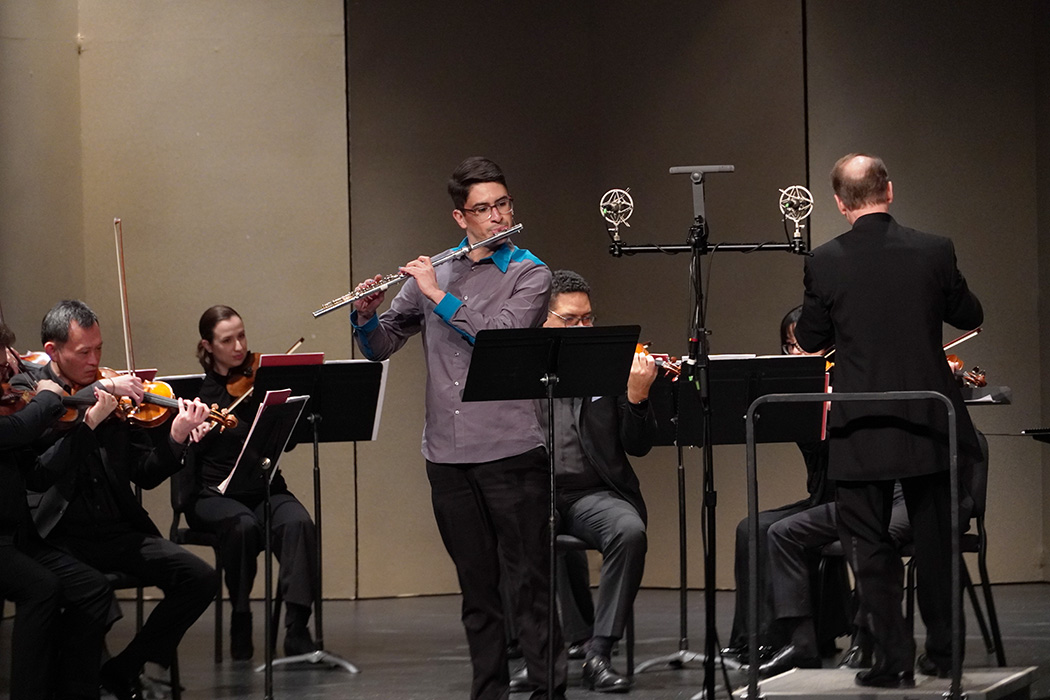Be careful what you wish for. Those Knoxvillians yearning for a cute little snowfall instead encountered Mother Nature in a particularly cantankerous winter mood. The snow and extreme cold wreaked havoc on our concert plans last weekend, making it a difficult proposition for both performers and audiences. Deep snow had become treacherous ice, stranding many in their homes unable to navigate “slickery” secondary roads and urban sidewalks. Those with a bit of cabin fever were grateful that the Knoxville Symphony Orchestra chose to plow ahead—pardon the pun—and perform Sunday afternoon’s Chamber Classics Series concert. Of course, this meant compromised rehearsal opportunities for performers and some risk-taking for those ticket-holders unwilling to be denied. What transpired on Sunday with conductor James Fellenbaum, though, was a great example of what can happen when focus, talent, wintry angst, and a lot of adrenaline mix in a compelling concert cocktail.
Continuing the Chamber Classics Series practice of enlisting the KSO’s own principals for solo roles, the KSO featured its Principal Flute, Devan Jaquez, in Malcolm Arnold’s Flute Concerto No. 1. The 1954 work is a showcase piece for a flutist and Jaquez did not disappoint. His vocal-like agile delivery of the meandering tonality, flights of melody, and engaging rhythmic motifs was impressive.
Maestro Fellenbaum opened the afternoon with some wistful gentleness: three selections from Florence Price’s Five Folksongs in Counterpoint—“Clementine,” “Drink to Me Only with Thine Eyes,” and “Swing Low, Sweet Chariot.” Coming later in her career and originally written as a string quartet, the pieces have a charming and elegant sophistication that is generally absent from folksong arrangements. Fellenbaum and the orchestra captured the contrapuntal angles that seemed to flow effortlessly from Price’s imagination.
The title given to the concert was “Schubert: Death and the Maiden” in reference to the final work: the Gustav Mahler arrangement of Schubert’s String Quartet No. 14 in D minor (“Death and the Maiden”). That work is so-named because of the second movement of variations based on Schubert’s song, “Death and the Maiden” in which a young girl confronts impending death. Fellenbaum and the chamber orchestra strings were fully immersed in the dramatic intensity of the arrangement, albeit with a larger sound, an augmented depth, and more rounded edges than one expects from the original string quartet.






